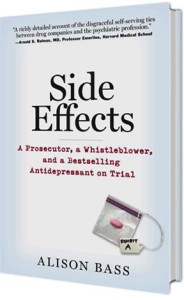The newly announced rules on financial conflicts of interest among federally funded researchers are certainly an improvement on the existing regulations issued by the National Institutes of Health in 1995 (which were never enforced anyway). But as ethicists and consumer advocates note — see here and here — they fall short of true reform largely because they continue to leave the reporting and management of financial conflicts up to the discretion of institutions who are themselves increasingly dependent on private-sector funding and thus imprisoned by their own conflicts of interest.
Why is this a problem? As Greg Petsko, a researcher at Brandeis University who is studying Parkinson’s and Lou Gehrig’s disease, recently explained to me: ““If you are accepting any sort of reimbursement or personal funds from any organization that might benefit from what you’re doing scientifically or from public statements you’re making, you have a moral obligation to make that connection clear so people can decide for themselves how much weight they want to give what you’re saying.”
In other words, studies show that financial conflicts can sway the judgement of doctors and researchers who receive federal funding, and it is important that the public know just exactly what those conflicts consist of – so they can make up their minds about how valid the science conducted by these conflicted researchers is.
Yet the new rules promulgated by the NIH don’t make it easy for consumers to find out about such conflicts of interest. When the revisions were first proposed, they contained a provision requiring universities to disclose their researchers’ conflicts of interest on a publicly available website. But that provision has been dropped under pressure from university and industry lobbyists, and instead institutions can decide for themselves how they want to release conflict of interest information. The only requirement is that if someone inquires about a specific researcher’s conflict, the institution has five business days to respond — see here.
Under the new rules, institutions now have to disclose more information about their researchers’ conflicts. Previously, each institution only has to report that there was a conflict to the funding agency and note that it was being managed, and there are many instances when universities didn’t even do that and were never sanctioned for their failure to disclose. For example, Brown University School of Medicine never bothered to disclose to the NIH the hundreds of thousands of dollars in personal consulting and speaking fees that Dr. Martin Keller, then chief of psychiatry at Brown University, was receiving from drug companies each year, despite the fact that Keller was receiving millions of dollars in federal research funds from the National Institute of Mental Health — see Boston Globe article I wrote here. But neither Brown nor Keller were ever publicly sanctioned for that failure to disclose.
Under the new rules, institutions are now supposed to disclose more information about the conflicts, including the specific holdings or financial interest, the value of the conflict, how this relates to the research in question and why it is deemed to be a conflict of interest. But again, how they disclose this information to the public is up to them, and if past history is any guide, there will be little enforcement of such rules by the NIH itself. As Sally Rockey, the NIH deputy director for extramural research, acknowledged in a brief teleconference about the rules yesterday, the federal agency has never terminated a grant because of non-compliance — see here.
Dr. Bernard Carroll, writing in Health Care Renewal, points up another loophole with the new rules:
The revised regulations do not close the regulatory loophole through which Charles Nemeroff strolled when he moved from Emory to the University of Miami. We covered that incident several times on this blog last year. Though Nemeroff was under a 2-year sanction and banned from participating in NIH-funded research at Emory, his friend Thomas Insel, Director of NIMH, assured the dean of the medical school at Miami that Nemeroff was in good standing to apply for NIH funding when he moved from Emory. To underline the point, Insel displayed the bad judgment of appointing Nemeroff to 2 new NIMH review committees.Do today’s revised regulations prevent a repeat of this administrative travesty? No, they don’t. There is some mention of ensuring oversight if a sanctioned investigator wishes to transfer a grant to a new institution, but nothing to prevent the Nemeroff-Insel dance from being repeated.
One can’t help but wonder if the weakened NIH regulations are part of the massive rollback in federal regulations by the Obama administration that I recently read about. What happened to our President’s spine?



Trackbacks/Pingbacks